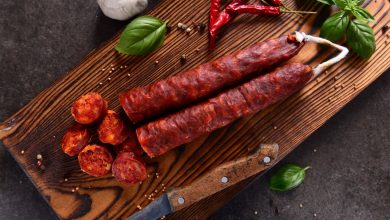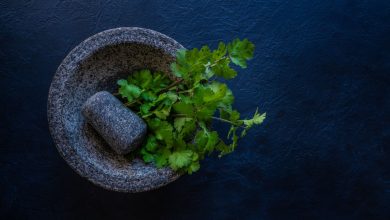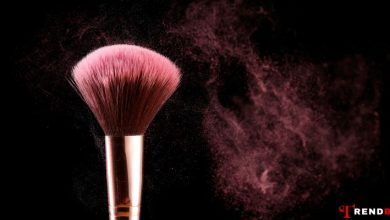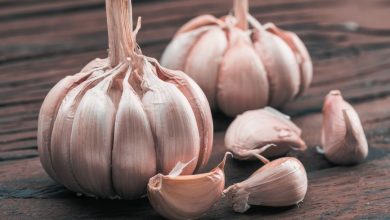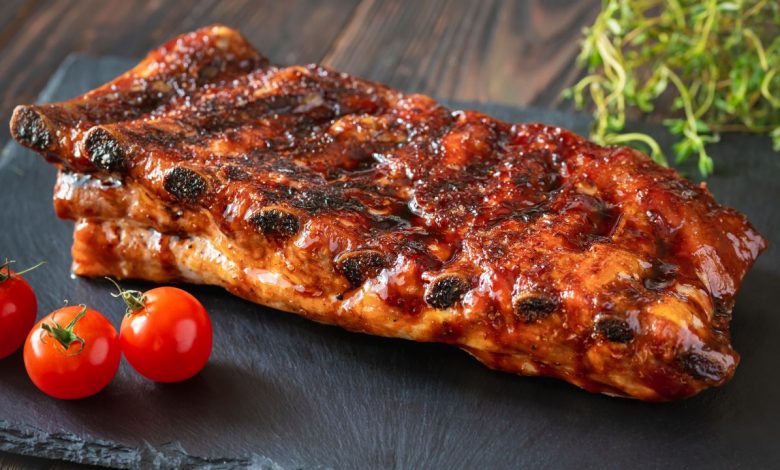
Ribs are one of the most popular and delicious meats to smoke, but they can also be challenging to get right. Smoking ribs requires patience, technique, and attention to detail, but the results are well worth it. Smoked ribs are juicy, tender, and full of smoky flavor that will make your mouth water.
In this article, Trendbbq will show you how to smoke ribs using a simple and effective method that works for any type of ribs, such as baby back ribs, spare ribs, or St. Louis style ribs. We will also give you some tips on how to choose, prepare, season, and serve your smoked ribs.
Table of Contents,
1. How to Choose Ribs for Smoking
The first step to smoking ribs is choosing the right type and quality of ribs. There are three main types of ribs that you can smoke:
- Baby back ribs: These are the smallest and leanest type of ribs, coming from the upper part of the rib cage. They have less meat and fat than other types of ribs, but they are also more tender and cook faster. Baby back ribs usually have 10 to 13 bones per rack and weigh about 2 to 3 pounds.
- Spare ribs: These are the largest and fattest type of ribs, coming from the lower part of the rib cage. They have more meat and fat than baby back ribs, but they are also tougher and take longer to cook. Spare ribs usually have 11 to 13 bones per rack and weigh about 3 to 4 pounds.
- St. Louis style ribs: These are a trimmed version of spare ribs, with the cartilage, breastbone, and skirt removed. They have a more uniform shape and size than spare ribs, making them easier to handle and cook. St. Louis style ribs usually have 10 to 12 bones per rack and weigh about 2 to 3 pounds.
When choosing ribs for smoking, look for racks that have even thickness and meat distribution, without too much fat or connective tissue. Avoid racks that have exposed bones or meat that is falling off the bones, as they may dry out or burn during smoking. You can also look for labels that indicate the quality of the ribs, such as USDA Prime or Choice, which indicate higher grades of meat.
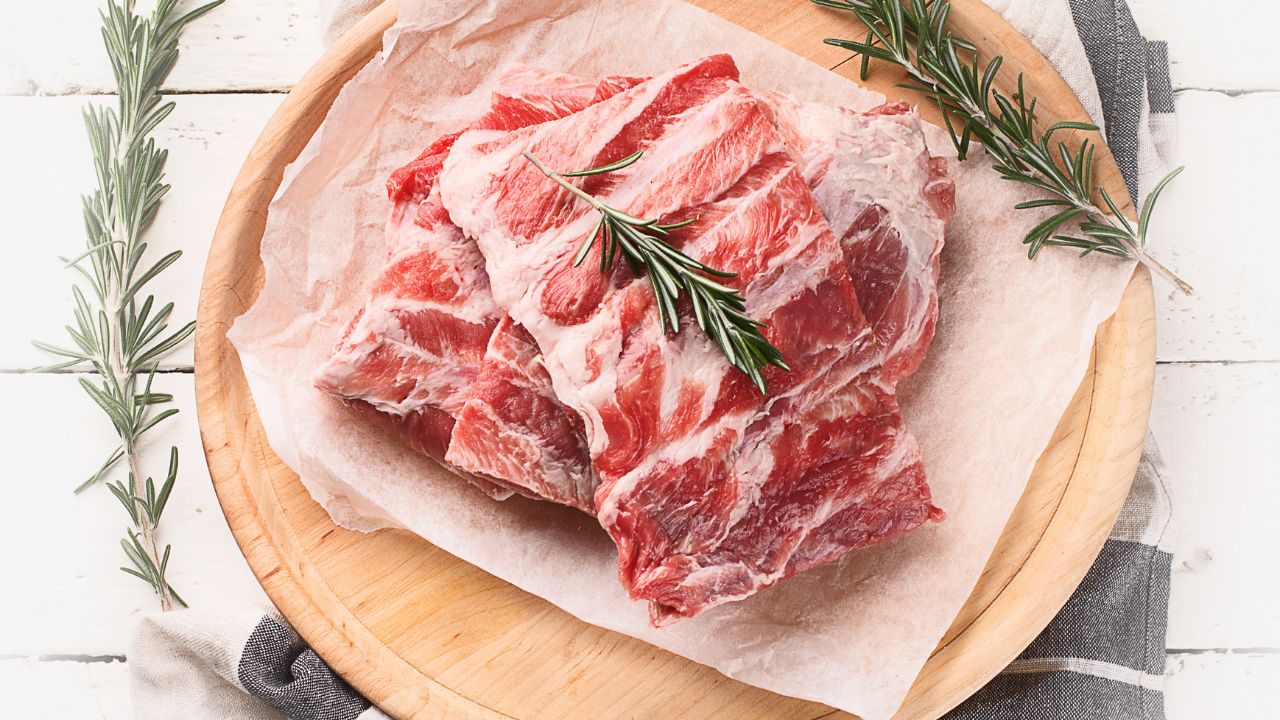
2. How to Prepare Ribs for Smoking
Now, let’s get into the nitty-gritty of preparing those ribs for a flavorful smoking experience. This is where you lay the foundation for mouthwatering goodness, and it all starts with the second step: getting those ribs smoker-ready.
- Trimming: First things first, you’ll want to trim your ribs. This means carefully snipping away any excess fat or meat that could get in the way of that perfect cook or that delectable rib flavor. Grab a sharp knife or some trusty kitchen scissors, and go along the edges of the rack, tidying up any loose bits that might be hanging around. Take a look at the meat and bones too – if there are any hefty fat chunks covering them, consider giving those the trim as well. But here’s a crucial tip: don’t go overboard and strip away all the fat. You’ll want to keep some for moisture and flavor.
- Rinsing: Next up, give your ribs a good rinse under cold running water. This step helps wash away any lingering dirt or debris that might be tagging along. After the rinse, a quick pat-down with a paper towel to dry them off is a smart move.
- Drying: Speaking of drying, let’s talk about it. You want those ribs nice and dry before they hit the smoker. Excess moisture can be a dampener on your smoke flavor and prevent that beautiful bark from forming. So, grab another paper towel and gently pat your ribs down, ensuring they’re moisture-free.
- Removing the Membrane: Here’s a little secret to tender ribs: remove the membrane. This thin layer of skin on the backside of the rack can make your ribs chewy if left on. To tackle it, start by using a knife or even a screwdriver to lift one corner of the membrane from the end of the rack. Once you’ve got a grip on it, take a paper towel for added traction and gently peel that membrane away. If it happens to break or tear, don’t sweat it – just repeat the process until it’s all gone.
3. How to Season Ribs for Smoking
- Dry rubs: Dry rubs are mixtures of spices and herbs that are rubbed onto the surface of the ribs before smoking. Dry rubs can add flavor and aroma to the ribs, as well as help form a bark on them. Some common ingredients for dry rubs include salt, pepper, paprika, garlic powder, onion powder, brown sugar, cumin, chili powder, and mustard powder. You can use about 1/4 cup of dry rub per rack of ribs and apply it evenly on both sides of the ribs. You can also let the ribs sit with the dry rub for a few hours or overnight in the refrigerator to let the flavors penetrate the meat.
- Wet rubs: Wet rubs are similar to dry rubs, but they also contain some liquid ingredients such as oil, vinegar, or juice. Wet rubs can add moisture and flavor to the ribs, as well as help them stick to the smoker. Some common ingredients for wet rubs include olive oil, apple cider vinegar, lemon juice, honey, soy sauce, and Worcestershire sauce. You can use about 1/4 cup of wet rub per rack of ribs and apply it evenly on both sides of the ribs. You can also let the ribs sit with the wet rub for a few hours or overnight in the refrigerator to let the flavors penetrate the meat.
- Sauces: Sauces are liquid or semi-liquid condiments that are brushed or sprayed onto the ribs during or after smoking. Sauces can add moisture, flavor, and color to the ribs, as well as create a sticky and glossy coating on them. Some common types of sauces for smoking ribs include barbecue sauce, honey mustard sauce, teriyaki sauce, and hot sauce. You can use about 1/2 cup of sauce per rack of ribs and apply it in thin layers on both sides of the ribs. You can also heat up the sauce before applying it to make it easier to spread and adhere to the ribs.
- Marinades: Marinades are liquid mixtures of seasonings and acids that are soaked into the ribs before smoking. Marinades can tenderize, moisturize, and flavorize the ribs, as well as help them absorb the smoke flavor. Some common ingredients for marinades include vinegar, lemon juice, wine, beer, soy sauce, garlic, ginger, and herbs. You can use about 2 cups of marinade per rack of ribs and submerge them completely in a large ziplock bag or a baking dish. You can also let the ribs marinate for at least 4 hours or up to 24 hours in the refrigerator to let the flavors penetrate the meat.
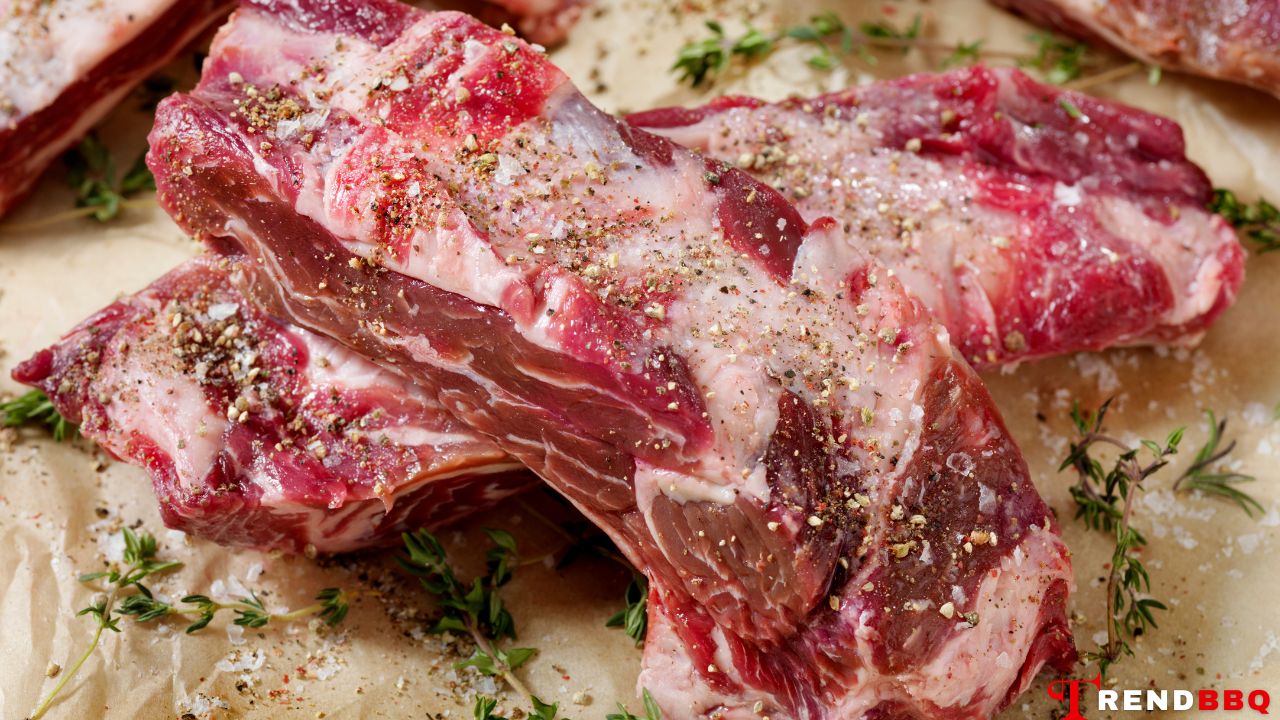
4. How to Smoke Ribs
- Preheat your smoker: Preheat your smoker to 225°F (107°C), which is the ideal temperature for smoking ribs. This temperature is low enough to cook the ribs slowly and evenly without drying them out or burning them. It is also high enough to create a nice smoke ring and bark on the ribs. You can use a thermometer to check the temperature of your smoker and adjust it as needed.
- Add your wood: Add your wood chips or chunks to your smoker according to your smoker’s instructions. You can soak your wood in water for about 30 minutes before adding it to make it last longer and produce more smoke. You can also mix different types of wood to create your own flavor combination. Some common types of wood for smoking ribs are hickory, mesquite, apple, cherry, or oak.
- Add your ribs: Add your seasoned racks of ribs to your smoker’s grate with some space between them for air circulation. You can place them bone side down or bone side up depending on your preference. Some people prefer bone side down because it protects the meat from direct heat and creates a juicier rib. Others prefer bone side up because it allows more smoke and heat to penetrate the meat and creates a crispier rib.
- Smoke your ribs: Smoke your ribs for about 3 to 5 hours depending on their size and thickness. You can check the doneness by bending a rack in half and seeing if it cracks easily or by inserting a meat thermometer into the thickest part of the meat and seeing if it reaches 190°F (88°C). You can also brush or spray some sauce on the ribs during the last hour of smoking to add more flavor and moisture.
- Rest and serve your ribs: Remove your ribs from the smoker and let them rest for 10 to 15 minutes covered with foil to allow the juices to redistribute and the meat to relax. Cut into individual ribs and serve with more sauce if desired.
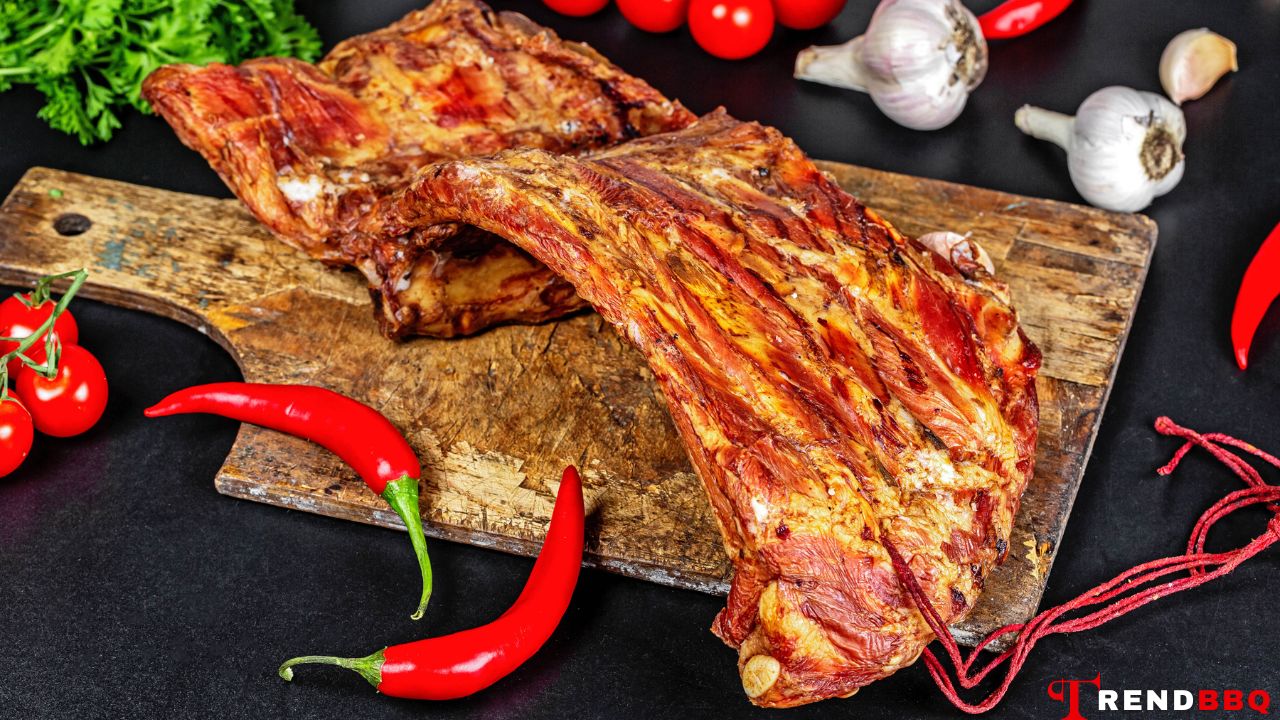
5. How long to smoke ribs
The cooking time for smoking ribs can vary depending on several factors, including the type of ribs, the temperature of your smoker, and your desired level of tenderness. Generally, you can expect to smoke ribs for a range of 3 to 6 hours. Here’s a guideline:
5.1. Baby Back Ribs
Baby back ribs are smaller and typically cook faster. Plan on smoking them for about 4 to 5 hours at a temperature of 225-250°F (107-121°C). They are done when the meat has pulled back from the bones and reached an internal temperature of around 190-205°F (88-96°C).
5.2. St. Louis Style Ribs
St. Louis style ribs are larger and meatier than baby back ribs. They usually require a longer cooking time of about 5 to 6 hours at the same temperature range of 225-250°F (107-121°C). Check for doneness by the meat pulling back from the bones and achieving an internal temperature of 190-205°F (88-96°C).
5.3. Spare Ribs
Spare ribs are larger and have more connective tissue, so they can take the longest to smoke. Plan on smoking spare ribs for approximately 5 to 6 hours or more at 225-250°F (107-121°C). Ensure that the meat has pulled back from the bones and reached an internal temperature of 190-205°F (88-96°C).
6. FAQs
6.1. What type of ribs should I use for smoking?
You can use various types of ribs, but the most popular choices for smoking are baby back ribs and spare ribs. Baby back ribs are smaller and leaner, while spare ribs have more meat and fat.
6.2. How long does it take to smoke ribs?
Smoking ribs typically takes 4 to 6 hours at a temperature of around 225-250°F (107-121°C). The exact time can vary based on the size and type of ribs, as well as your smoker setup.
6.3. What type of wood should I use for smoking ribs?
For a classic smoky flavor, use hardwoods like hickory, oak, apple, or cherry. The choice of wood can influence the taste, so pick one that complements your preferences.
6.4. What is the best rub or seasoning for ribs?
The best rub for ribs often includes a mix of brown sugar, paprika, salt, pepper, garlic powder, onion powder, and other seasonings. You can customize it to suit your taste.
6.5. How can I tell when ribs are done and ready to be removed from the smoker?
Ribs are done when they reach an internal temperature of around 195-203°F (90-95°C) and when the meat has pulled back from the bone slightly. Additionally, you can do the “bend test” – when lifted with tongs, the ribs should slightly crack but not break apart.
>>> See more: How to cook steak in a soft pan as delicious as a restaurant
